Where Does Whole Foods Produce There in Store Chicken and Beef
Let's talk about meat. If you've never seen one of the countless food documentaries unveiling the horrors of the meat industry, you're a little late to the party. We've all heard it before—industrial meat is bad. Eating a piece of industrially raised meat is actually putting you at risk, but it's cheap and convenient and sometimes easier to obtain rather than venturing elsewhere for better options (luckilyInstacartis helping change that!).
What exactly are we paying for when we choose to opt out of the mass meat market? An organic product raised humanely sans antibiotics. I've stayed away from industrial meat since being brought to temporary vegetarianism/tears when I saw Food Inc., but I wanted to know if I could actually see and taste the difference.
Whole Foods Market prides themselves on the fact that they know about the meat they're giving us. The cows that provide organic grass fed strips I tested (see below) never had any hormones or antibiotics and were on a strictly grass-fed diet. The Bell and Evans chicken was only fed vegetarian feed, was never injected with hormones or antibiotics and was encouraged to roam in a natural environment.
The other brands, USDA beef and Perdue chicken, are subject to major hormone and antibiotic injections—and that's the least of the problems. For more on that, check out Michael Pollan's article on a peek inside the big industrial meat wheels.
Here's a side-by-side cook-off of the exact same cuts of chicken and steak, one from Whole Foods Market and one from my local grocery down the block, Fresh Grocer.
THE PLAYERS
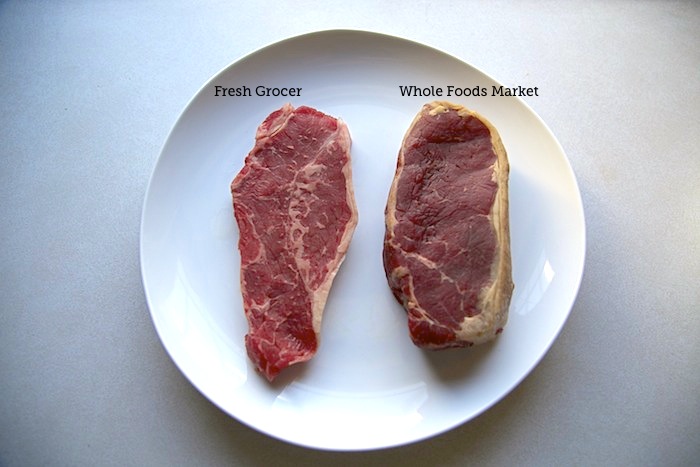
Photo by Nicole Ripka
New York Strip Steak
Whole Foods Steak: $19.45 Organic Grass-fed NYC Strip
Fresh Grocer Steak: $11.39 Prime Angus NYC Strip USDA Choice
Initial observations:The Whole Foods steak is thick and a pinky red. If you stack three of the Fro Gro steaks on top of one another then maybe you'll equal the thickness of the former. The steak from Fro Gro is kind of creepily red and extremely skinny. There's not much fat either.
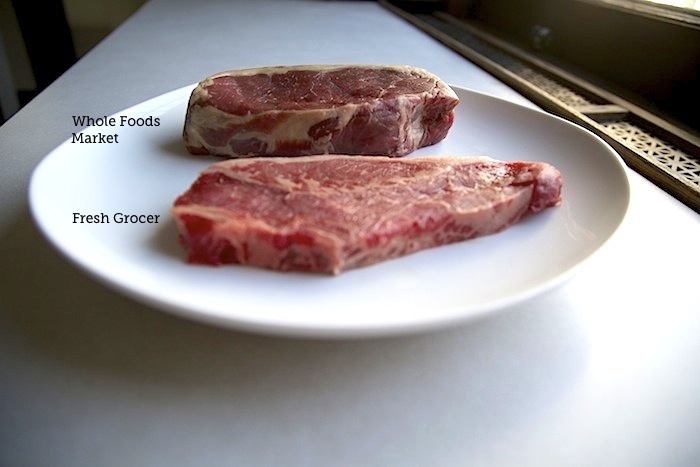
Photo by Nicole Ripka
Cooking:I heat my cast iron skillet until piping hot and simply season the steaks with olive oil, salt and pepper. I sear them at the same time in canola oil and let a crust form before flipping them.
The Fro Gro steak cooks to a medium temperature in under 2 minutes. It's cooking so fast I can barely keep up. The WF steak takes much longer (more around 10 minutes) and needs to be flipped on all sides to ensure proper browning.
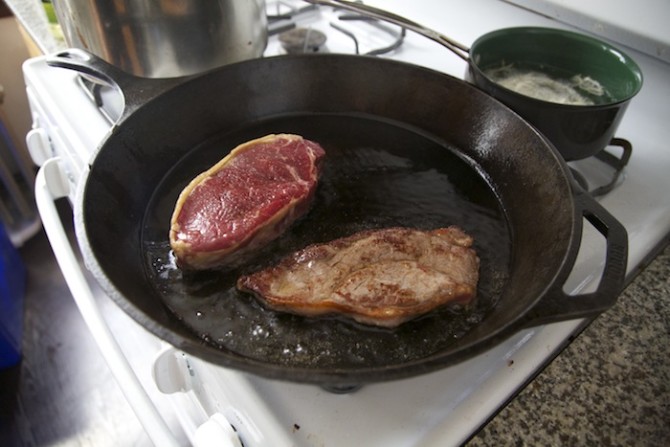
Photo by Nicole Ripka
Results when cut: The Fro Gro one looks grey and the fat is firm and sketchy and kind of looks like veins. It tastes like I'm chewing wet cardboard. Disturbed. The Whole Foods steak is tender and earthier tasting, with a softer chew and more evenly distributed fat.
Conclusion: Honestly, I wouldn't eat the Fro Gro steak unless you paid me, and probably not even then. Its chew was distinctly crunchy and it felt like I was chewing through strips of glue. This is the steak they serve you in fajitas at cheap Mexican restaurants, and cook it until you can barely tell that it's steak.
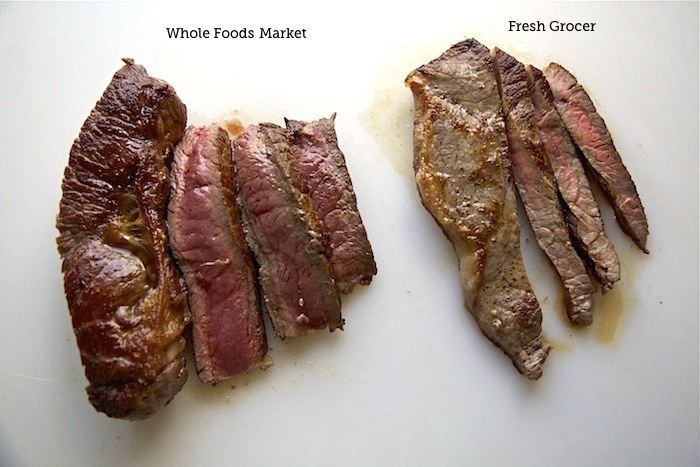
Photo by Nicole Ripka
Bone-in Split Chicken Breasts
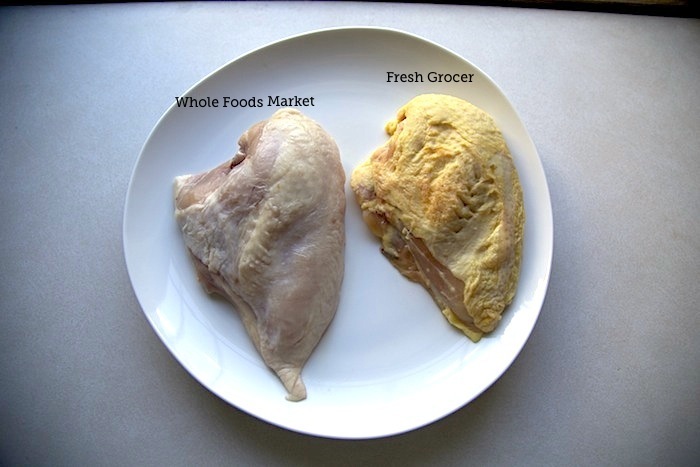
Photo by Nicole Ripka
Whole Foods chicken: $12 Bell and Evans organic chicken breasts
Fresh Grocer chicken: $4.62 Purdue chicken breasts
Initial Observations:The Whole Foods chicken is white and firm and the skin is tight. The one from Fro Gro has a bizarre neon yellow tint that makes me concerned. It looks shriveled and toxic and I'm scared to eat it!!!
Cooking: I pan sear both in some canola oil after seasoning them with olive oil, salt and pepper and they take about equal time to cook. The skin on the Fro Gro chicken took longer to crisp and never fully crisped while the Whole Foods chicken's skin crisped right up.

Photo by Nicole Ripka
Results when cut:The image of the raw chicken with its bright yellow skin is etched in my mind so eating this Purdue chicken is an emotional battle. The skin retains that neon quality and is rubbery and strange and not appetizing at all. The meat itself is dry and tense.
The Bell and Evans chicken is actually amazing. The skin crackled and the meat is intensely juicy and supple. There's also just more of it —the breast itself has more substance.
Conclusion: If you're color blind, then maybe, just maybe, you'll be able to eat the one on the right.
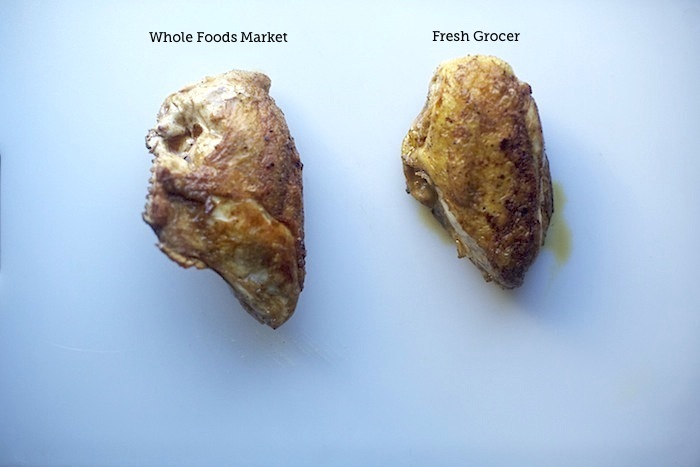
Photo by Nicole Ripka
Close up of that yellow neon-ness:
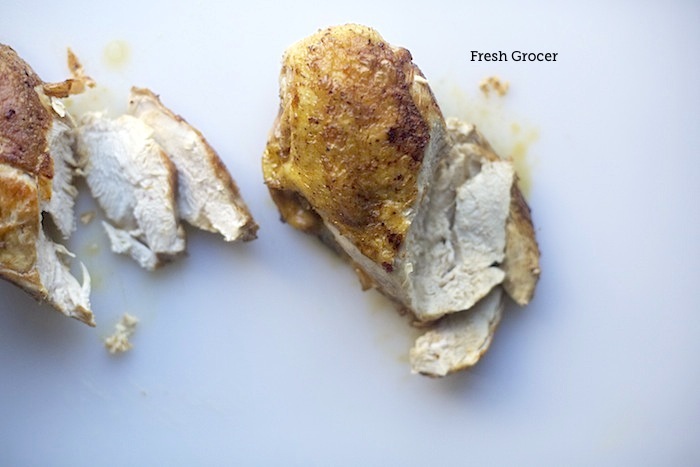
Photo by Nicole Ripka
And that beautiful crispy skin and moist meat:
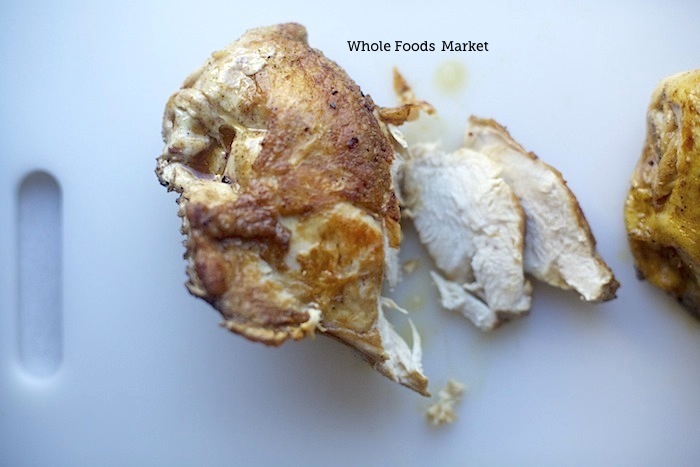
Photo by Nicole Ripka
OVERALL FINDINGS
Spending the extra money on quality, reliable meat is the way to go. You should never feel uncomfortable or hesitant about meat you're about to consume, and I felt both of those things before eating the chicken and steak from my local grocery store.
Thanks to Whole Foods Market for being a proud Spoon sponsor.
laurenswastfultaint.blogspot.com
Source: https://spoonuniversity.com/lifestyle/side-side-comparison-thatll-change-way-buy-meat
0 Response to "Where Does Whole Foods Produce There in Store Chicken and Beef"
Post a Comment